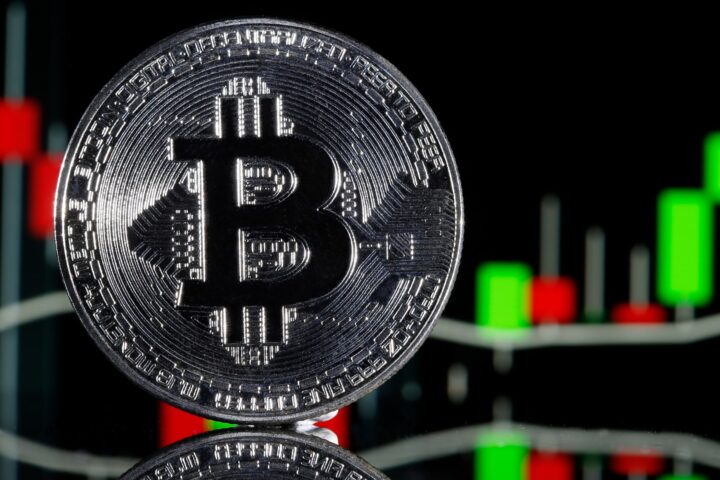Cryptocurrency exchange Bitstamp is set to halt its services for Canadian customers from January 8, 2024, as announced by Bobby Zagotta, Bitstamp USA CEO and global chief commercial officer.
Following this decision, all Canadian accounts will be deactivated, and customers have been advised to withdraw their funds and close their accounts before the stipulated date.
Despite this move, Bitstamp emphasizes its commitment to the safe return of assets, stating, “your crypto assets always remain yours.”
Bitstamp’s departure from Canada is not an outright exit but a strategic pause.
The company cites its ongoing expansion strategies and the need to concentrate on regions with favorable regulatory conditions as the primary reasons.
Zagotta mentioned, “We aim to revisit the Canadian market in the future.
READ MORE:Hacker Exploits Media Coverage of Bankman-Fried’s Trial to Conceal $400M FTX Heist
But at present, we can’t dedicate the necessary resources to meet new Canadian regulations.”
Furthermore, while refocusing on aligning with global regulations, Bitstamp remains dedicated to its international clientele.
Decisions about their operations in particular nations will hinge on regulatory dynamics and market scenarios.
This pivot in strategy is concurrent with Bitstamp’s reported endeavors to procure funding for scaling its worldwide operations.
There are indications that the exchange has been in fundraising mode since May 2023, with goals like introducing derivatives trading in Europe by 2024 and intensifying its footprint in the UK.
Established in 2011, Bitstamp stands as one of the pioneering cryptocurrency exchanges.
It has an extensive global reach, catering to countries like the US, Singapore, South Korea, and Japan, among others.
As per CoinGecko, Bitstamp’s daily trading volume is approximately $114 million. This figure, however, pales in comparison to its rival Binance, which boasts a daily trade volume nearing $4 billion.
Other Stories:
Prosecutors Challenge Defense Over FTX Funds in Bankman-Fried’s High-Profile Trial
Why Developers Should Seriously Consider Building on EOS EVM with v0.6.0 Release
EU Mulls Tighter Regulations on Major AI Systems, Mirroring Digital Services Act Approach
Blockchain data highlighted by Coinbase director, Conor Grogan, shows that in 2021, Alameda Research redeemed over $38 billion in Tether USDT tokens, even though their assets under management didn’t match this value. At the 2021 crypto market’s peak, the USDT creation by Alameda exceeded its recorded assets.
Grogan also pointed out probable USDT redemptions ordered by FTX were from Alameda’s stash, approximately 3.9 billion USDT. Most of these redemptions coincided with Terra’s algorithmic stablecoin downturn.
In January 2021, Alameda’s former co-CEO, Sam Trabucco, addressed reports about major USDT mints by Tether.
He detailed how Alameda capitalized on arbitrage opportunities due to USDT’s value fluctuations on different exchanges.
He explained that the value at which USDT trades compared to $1 tends to be volatile.
When juxtaposed with BTC/USD trades, Bitcoin-to-USDT trades often show a minor deficit in basis points.
Trabucco emphasized that the BTC/USDT and BTC/USD markets are better indicators of USDT’s trading position than any individual exchange’s USDT/USD market.
READ MORE:Prosecutors Challenge Defense Over FTX Funds in Bankman-Fried’s High-Profile Trial
Unlike USDT, other stablecoins like the USD Coin (USDC) have a steadier premium.
This is attributed to the USDT creation and redemption process.
As only certain firms can directly create and redeem USDT, most traders obtain and trade USDT via the markets, bypassing Tether’s treasury.
Highlighting Alameda’s trading strategies, Trabucco mentioned that when USDT’s value exceeds $1, a well-equipped firm like Alameda would be inclined to sell, and they did so extensively.
With their ability to initiate USDT creations and redemptions, they could place significant bets.
This was a strategic move for Alameda, ensuring both profit for the company and stability for USDT’s value, keeping it close to the $1 mark.
Alameda leveraged these arbitrage chances by creating USDT tokens and cashing in on the premium.
In 2021, Sam Bankman-Fried also mentioned Alameda’s active redemptions of USDT for U.S. dollars.
Cointelegraph is awaiting Tether’s response regarding the exact number of USDT tokens minted upon Alameda’s request.
Other Stories:
Binance and OKX Adjust Operations in Response to U.K.’s New FinProm Regulations
EU Mulls Tighter Regulations on Major AI Systems, Mirroring Digital Services Act Approach
Why Developers Should Seriously Consider Building on EOS EVM with v0.6.0 Release
The hacker, dubbed “FTX Drainer”, who previously stole over $400 million from FTX and FTX.US in November, might be exploiting the media frenzy surrounding Sam Bankman-Fried’s fraud trial to further conceal the stolen assets, as per Hugh Brooks, CertiK’s director of security operations.
As Bankman-Fried’s trial commenced, the “FTX Drainer” initiated a series of transactions, moving millions in Ether obtained from the theft.
Recently, the hacker shifted about 15,000 ETH (equivalent to approximately $24 million) to three fresh wallet addresses.
Brooks suggests that the trial’s widespread media coverage might be serving as a distraction, allowing the hacker to stealthily move the assets.
He theorized that the perpetrator might have assumed the trial would consume so much of the Web3 sector’s attention that tracking the stolen funds would become more challenging.
READ MORE:Binance and OKX Adjust Operations in Response to U.K.’s New FinProm Regulations
FTX’s valuation once stood at $32 billion.
However, following the hack, it filed for bankruptcy on November 11. On the same day, FTX staff noticed significant fund withdrawals from their wallets.
A Wired report dated Oct. 9 unveiled that on realizing the hacker had access to several wallets, FTX’s team shifted a significant portion of the remaining assets, between $400 million to $500 million, to a private Ledger cold wallet.
This strategic move probably thwarted the hacker from pilfering close to $1 billion.
Brooks has also shed light on the hacker’s evolving tactics. Initially, on November 21, the hacker tried laundering the stolen money using the “peel chain” method, which involves dispersing decreasing amounts to fresh wallets.
However, the hacker now adopts a more intricate technique, splitting the funds across numerous wallets. This makes tracing more time-consuming.
As of now, the identities of individuals or groups responsible for the hack remain elusive, and investigations persist.
Other Stories:
Prosecutors Challenge Defense Over FTX Funds in Bankman-Fried’s High-Profile Trial
Why Developers Should Seriously Consider Building on EOS EVM with v0.6.0 Release
EU Mulls Tighter Regulations on Major AI Systems, Mirroring Digital Services Act Approach
U.S. prosecutors have urged the court overseeing Sam Bankman-Fried’s trial to prevent his defense from raising arguments about the possible recovery of FTX customer funds invested in Anthropic.
Bankman-Fried directed $500 million into the AI startup, Anthropic, in April 2022. The U.S. government, however, intends to demonstrate that these funds were siphoned from FTX customer deposits.
Anthropic has recently been in the spotlight, aiming to secure new investment, with major companies like Amazon and Google showing interest.
This could boost the firm’s valuation to between $20-$30 billion.
Prosecutors stress that this surge in valuation could also amplify the worth of Bankman-Fried’s stake, which might facilitate the recovery of assets for those impacted by FTX’s bankruptcy.
A letter presented to Judge Lewis Kaplan reveals that the U.S. government and Bankman-Fried’s attorneys have debated issues likely to emerge during witness cross-examination.
The defense is prepping to introduce evidence about the present value of Bankman-Fried’s 2022 investment in Anthropic.
READ MORE: Crypto Exchange HTX Recovers Stolen Funds; Rising Cyberattacks Concern Industry in 2023
Prosecutors argue that such evidence could be utilized to claim that FTX customers and other affected parties might be fully compensated.
This notion has been previously termed by the court as an “impermissible purpose”.
They further state, “Such evidence would… be wholly irrelevant, and present a substantial danger of unfair prejudice.”
The crux of the case against Bankman-Fried lies in accusations of wire fraud, involving the use of FTX customer deposits for various investments.
The prosecution holds that any successful investments Bankman-Fried made are ultimately inconsequential to the charges being examined.
While the government aims to present evidence of Bankman-Fried’s alleged misuse of customer funds leading to significant deficits for FTX, they do not plan to provide details on the final losses post the FTX bankruptcy completion.
The Bankman-Fried trial, reported by Cointelegraph’s Ana Paula Pereira from New York, commenced by exploring the disappearance of around $8 billion of FTX customer assets from the defunct crypto exchange.
Other Stories:
ESMA Releases Second Consultative Paper on MiCA Mandates, Focuses on Sustainability and Transparency
FTX Co-Founder Testifies: Former CEO’s Alleged Misuse of User Funds
Senior Republicans Push Biden Administration to Enhance Semiconductor Export Rules to China
The European Union (EU) is in advanced discussions to enact further regulations on major artificial intelligence (AI) systems.
These talks involve the European Commission, European Parliament, and the member states of the EU.
Their primary focus is the potential impacts of extensive language models like Meta’s Llama 2 and OpenAI’s ChatGPT-4. The objective is to include additional constraints on these models within the forthcoming AI Act.
Bloomberg’s sources suggest that the EU’s aim is to ensure that startups are not excessively restricted while maintaining adequate control over larger AI systems. The agreements made thus far remain preliminary.
The approach being considered for the AI systems mirrors the strategy used for the EU’s Digital Services Act (DSA).
The DSA was recently executed by the EU to ensure that platforms and websites maintain specific standards, particularly around the protection of user data and monitoring for unlawful activities.
Moreover, massive web platforms face even more stringent regulations under the DSA.
READ MORE: Bitcoin Hovers Near $28,000 Amid Geopolitical Tensions and Trader Speculations.
For instance, major companies like Alphabet and Meta were given a deadline of August 28 to align their service practices with these newly introduced EU standards.
The AI Act by the EU is set to become among the initial mandatory AI-specific regulations established by a Western government.
By contrast, China had already put into effect its own AI regulations by August 2023.
Within the stipulations of the EU’s proposed AI Act, companies involved in the development and rollout of AI systems would be required to conduct risk evaluations.
Furthermore, AI-produced content would need clear labeling, and the use of biometric surveillance would be entirely prohibited, among other provisions.
It’s important to note, however, that the legislation is still in its proposal stage, granting member states the discretion to challenge any of the suggestions made by the parliament.
Since China introduced its AI regulations, over 70 new AI models have been launched, indicating a vibrant AI landscape despite the regulatory environment.
Other Stories:
Crypto Exchange HTX Recovers Stolen Funds; Rising Cyberattacks Concern Industry in 2023
ESMA Releases Second Consultative Paper on MiCA Mandates, Focuses on Sustainability and Transparency
Senior Republicans Push Biden Administration to Enhance Semiconductor Export Rules to China
Major global cryptocurrency exchanges, Binance and OKX, are adjusting their operations to adhere to the U.K.’s new Financial Promotions (FinProm) Regime.
Introduced by the U.K. Financial Conduct Authority (FCA) on October 8, the regime aims to ensure transparency in crypto promotions.
In anticipation of these regulations, Binance, on October 6, introduced a new domain exclusively for U.K. retail users and joined hands with the local peer-to-peer lending platform, Rebuildingsociety.
Starting October 8, U.K. retail users will be directed to this domain which will only display Binance offerings in line with U.K. regulations.
This means services like spot and margin trading, Binance Pay, the NFT marketplace, loans, etc., will be accessible.
However, offerings like gift cards, referral bonuses, and research will no longer be available to U.K. retail users due to the FinProm compliance.
Notably, this will not affect users exempted under FinProm, like specific institutional and professional investors.
Similarly, OKX made its own compliance announcements on October 6.
The platform has limited its token offerings to about 40 assets and now sports striking risk warnings on its platform.
READ MORE: Senior Republicans Push Biden Administration to Enhance Semiconductor Export Rules to China
One such cautionary message on the OKX homepage advises investors about the volatile nature of crypto investments, underlining the importance of investing only what they’re prepared to lose.
Furthermore, OKX has initiated a dedicated U.K. social media account (on a platform formerly known as Twitter) to keep users updated about compliant services and products.
Another entity, the crypto payment service MoonPay, is working to accommodate the FinProm rules.
MoonPay’s deputy general counsel, Matt Sullivan, highlighted the global challenge of meeting these U.K.-specific standards.
Sullivan emphasized that adhering to the FinProm rules means tailoring products, incorporating new processes, and initiating company-wide education.
He hinted at a possible adjustment phase as interpretations of certain rules might evolve.
However, some crypto firms seem to be grappling with these new promotional regulations.
As per an FCA announcement on October 8, significant crypto exchanges, KuCoin and HTX, possibly marketed their services without requisite permissions.
These firms were among 143 “non-authorized firms” cautioned against by the FCA, advising the public to avoid interactions with them.
Other Stories:
Bitcoin Hovers Near $28,000 Amid Geopolitical Tensions and Trader Speculations.
ESMA Releases Second Consultative Paper on MiCA Mandates, Focuses on Sustainability and Transparency
Crypto Exchange HTX Recovers Stolen Funds; Rising Cyberattacks Concern Industry in 2023
On October 5, the European Securities and Markets Authority (ESMA), the EU’s primary markets regulator, unveiled its second consultative paper focused on the Markets in Crypto-Assets (MiCA) mandates.
This comprehensive 307-page report is an invitation for stakeholders to share their perspectives on five specific MiCA areas.
At the core of the discussion is the proposal for sustainability indicators for distributed ledgers.
These indicators emphasize both quantitative metrics, such as energy consumption, greenhouse gas emissions, and waste production, and qualitative insights on the environmental consequences of using equipment by blockchain nodes.
Another pivotal aspect revolves around the disclosure of inside information, ensuring that relevant data stays transparent and accessible.
The ESMA has also pinpointed the necessity for technical prerequisites for white papers, which would guide the foundational design of crypto projects and their respective public presentations.
READ MORE:FTX Co-Founder Testifies: Former CEO’s Alleged Misuse of User Funds
Further, in a move to bolster trading transparency, the ESMA has recommended that Crypto-Asset Service Providers (CASPs) disclose crucial trading details.
This encompasses data like trading date and time, the specific crypto-asset involved, pricing details, transaction volume, execution location, and the unique transaction ID.
Notably, while CASPs would have flexibility in how they store transactional data, the ESMA mandates that they must be capable of converting this data into a predetermined format upon request by authorities.
As the ESMA continues to refine its approach towards regulating the burgeoning crypto market, stakeholders can anticipate another consultative paper in Q1 2024.
The culmination of these consultations will be a final report, which will serve as a foundation for the draft technical standards expected to be presented to the European Commission by June 30, 2024.
It’s worth noting that the ESMA had previously issued a consultation paper in July, where they highlighted the need for crypto companies registering under MiCA to furnish additional details to the national authorities of their registration country.
Other Stories:
Senior Republicans Push Biden Administration to Enhance Semiconductor Export Rules to China
FTX Co-Founder Testifies: Former CEO’s Alleged Misuse of User Funds
Huobi Global’s cryptocurrency exchange, HTX, has successfully recovered funds stolen by a hacker in September and subsequently issued a bounty of 250 Ether as a part of the resolution.
On September 25th, a hot wallet belonging to HTX was compromised, resulting in a loss of 5,000 ETH, which was approximately valued at $8 million. However, the firm swiftly engaged the hacker, asserting they knew the perpetrator’s identity.
In an attempt to recuperate the stolen assets, HTX proposed a deal: the hacker would receive a 5% bounty, equivalent to roughly $400,000, in exchange for returning 95% of the stolen funds by October 2nd.
This offer came with the added incentive that HTX would abstain from pursuing any legal action against the hacker.
By October 7th, the situation was resolved. Justin Sun, an investor in Huobi Global and adviser to HTX, conveyed his gratitude via an X (previously known as Twitter) post, thanking the broader industry for its assistance.
He emphasized, “Strengthening blockchain security and safeguarding user assets is an immense challenge.
READ MORE: Elon Musk Faces Scrutiny Over Suspension of XRP Account Amidst SEC Investigation
Our constant endeavor is to ensure complete security for user assets, and we’re grateful for the unwavering support from our users and the community.”
2023 has seen a significant uptick in cyberattacks on crypto platforms.
A study by blockchain security company Immunefi revealed that there were 76 breaches on cryptocurrency and Web3 platforms in Q3 2023, a sharp rise from 30 hacks in Q3 2022.
In a similar incident during the same week, the decentralized protocol, Mixin Network, suffered a massive $200 million hack due to a vulnerability in a third-party cloud service.
In response, Mixin Network has announced a $20 million bug bounty for the return of the stolen assets, but recovery seems uncertain.
Adding to the complexity of these hacks, on October 6th, Anne Neuberger, the US deputy national security adviser for cyber and emerging technology, suggested to Bloomberg that North Korean hackers might be responsible for the Mixin Network breach.
Neuberger commented on the familiarity of the techniques employed, noting they were reminiscent of previous attacks attributed to North Korea.
Other Stories:
Senior Republicans Push Biden Administration to Enhance Semiconductor Export Rules to China
FTX Co-Founder Testifies: Former CEO’s Alleged Misuse of User Funds
On October 6th, two senior Republicans from the U.S. House of Representatives called on the Biden administration to enhance export control measures concerning advanced semiconductors to China.
The plea came in the form of a letter to National Security Adviser Jake Sullivan, penned by Representative Michael McCaul, the chairman of the House Foreign Affairs Committee, and Representative Mike Gallagher, who chairs the House Select Committee on China.
The duo’s concerns stem from recent technological strides made by China’s premier semiconductor manufacturer, emphasizing that the regulations introduced in 2022 require an overhaul.
They pinpoint certain deficiencies or “loopholes” in the current system.
Their concerns were accentuated by the recent launch of Huawei Technologies’ Mate 60 Pro smartphone.
READ MORE: Binance Market Dominance Dips Amid Regulatory Hurdles and Fee Changes
This device features cutting-edge chips produced by China’s Semiconductor Manufacturing International Corporation (SMIC), a move seemingly sidestepping U.S. sanctions.
In their correspondence, McCaul and Gallagher commented on the system’s lack of responsiveness.
They noted, “The rules set out in 2022 and SMIC’s growing capabilities indicate a bureaucratic system that’s out of touch with China’s industrial ambitions and military goals.
There seems to be a shortfall in technological understanding and a hesitancy to act decisively.”
In light of these concerns, the legislators are pushing for the Biden administration to revamp the regulations quickly, specifically in response to Huawei and SMIC.
Their recommendations extend to curbing Chinese companies’ access to powerful AI chips available through cloud computing.
Furthermore, McCaul and Gallagher underlined the criticality of adhering to existing regulations, especially those that limit Chinese corporations and restrict U.S. officials from ensuring adherence to American export rules.
Other Stories:
Crypto CEO’s Ex-Roommate Testifies About $8-Billion FTX Deficit Amid Fraud Allegations
Bitcoin Stabilizes Near $28,000: Whales, Resistance Levels, and Exchange Dynamics in Play
Elon Musk, previously associated with Twitter and currently executive chair and CTO of X, has come under scrutiny for the suspension of an XRP-focused account.
The account, named Digital Asset Investor.XRP, was notably active in promoting discussions related to XRP, a cryptocurrency embroiled in controversies, including a lawsuit by the SEC labeling it as an unregistered security.
Crypto Eri, a prominent figure in the cryptocurrency realm, took to X to ask Musk if the account’s suspension was accidental.
The Digital Asset Investor.XRP account was not only a hub for XRP advocates but also a platform where enthusiasts could share insights and engage in crypto discussions.
While some argue that the account suspension might be a proactive step against potential scammers, the silence from X’s end has fueled further speculation.
Reacting to a suggestion that the move was anti-scam, Crypto Eri expressed her dismay, stating, “I consistently stick to the facts, even if labeled as the ‘crypto police’ or part of ‘cancel culture’. It’s heartbreaking, especially when he’s built his entire channel on the X platform.”
Prominent personalities, including pro-XRP lawyer John Deaton, are now questioning if this suspension is an isolated event or indicative of a broader censorship trend within the X platform.
In another development, recent findings revealed that the SEC is probing Musk over potential violations of federal securities rules.
This investigation delves into Musk’s actions related to stock purchases and subsequent declarations about X’s acquisition.
Other Stories:
Binance Market Dominance Dips Amid Regulatory Hurdles and Fee Changes
Bitcoin Stabilizes Near $28,000: Whales, Resistance Levels, and Exchange Dynamics in Play
Crypto CEO’s Ex-Roommate Testifies About $8-Billion FTX Deficit Amid Fraud Allegations












